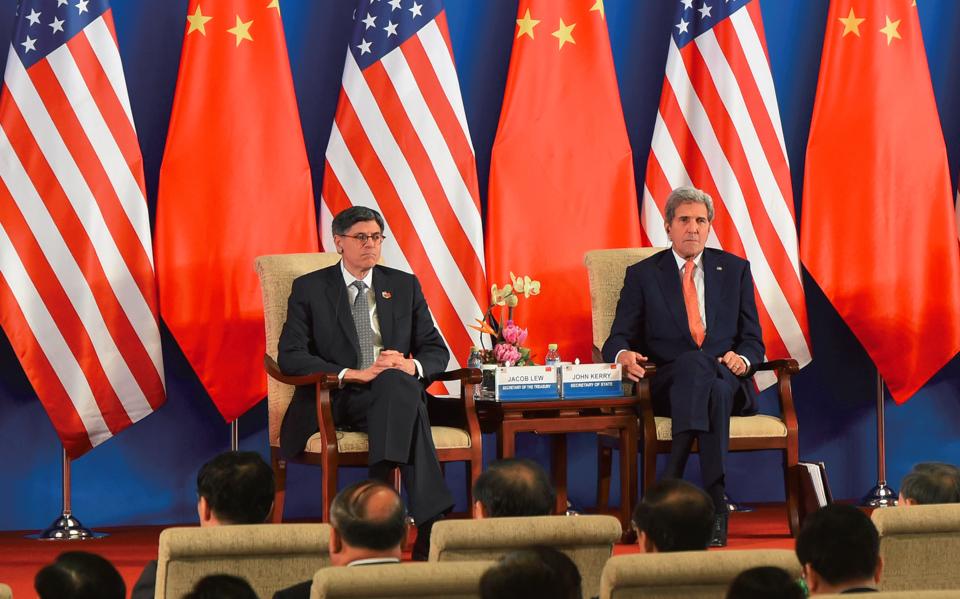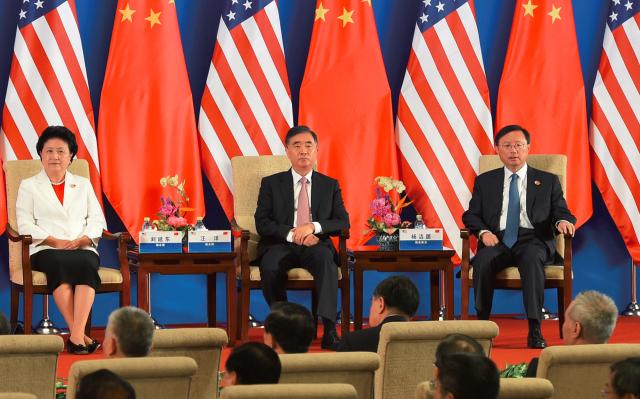The eighth US-China Strategic and Economic Dialog (S&ED) took place in Beijing on June 6 and June 7. Top leaders from both sides, including US Secretary of State John Kerry, Chinese President Xi Jinping and Premier Li Keqiang came together for the event. The forum, which has been held annually since 2009, serves as an important platform that allows the two world powers to manage disputes and strengthen cooperation.
Chinese officials have likened the meeting to a “pressure-release valve” and US officials have dubbed it a “flagship dialog.” Both sides have released factsheets detailing the agreements reached by the two parties in areas ranging from climate change and cyber security to military relations and international governance.
However, as the South China Sea disputes have increasingly strained ties between the two countries, tension pervaded the annual event. Neither world power wants this conflict to affect the other aspects of their relationship, but as both sides dig in their heels on the maritime disputes, the issue threatens to further complicate their already complex bond.
Different Approaches
Prior to the S&ED, the US continued to apply diplomatic pressure on China regarding the South China Sea. Two weeks before the dialog, US President Barack Obama paid a high-profile visit to Vietnam, where he announced Washington’s decision to lift its arms embargo against the country. At the G7 summit held in Japan in late May, the G7 leaders released a statement addressing the South China Sea issue, without mentioning China directly.
In a May 27 commencement speech delivered at the US Naval Academy, US Secretary of Defense Ash Carter warned that China could “erect a Great Wall of self-isolation” through its actions in the South China Sea and mentioned the Pentagon’s plan to send its most advanced military assets to the Asia- Pacific region. Two days before the S&ED in Beijing, Carter repeated the phrase “Great Wall of self-isolation” at the Shangri-La Dialog, a major security summit held this year in Singapore.
China has suggested that it wants to avoid quarreling with and confronting the US directly.
When the US lifted its arms embargo on Vietnam, many international analysts said the move’s true target was China, although Obama denied that China’s growing military strength was a motivation. Instead of commenting on the lift’s potential underlying significance, China responded in a very reserved way. When Chinese Foreign Ministry spokesperson Hua Chunying was asked about the subject, she said China “is happy to see Vietnam develop normal relations with all countries, including the US.” Friction between China and the US was expected to intensify at this year’s Shangri- La Dialog. Most participating countries sent their defense ministers to the security forum, but the highest-ranking officer that China sent was Sun Jianguo, deputy chief of the Central Military Commission’s Joint Staff Department, who holds a relatively lowlevel position. Some analysts said this choice showed that China aimed to prevent direct confrontation during the dialog. Compared to Carter’s rhetoric, Sun’s Shangri-La speech was much milder in tone. He did not directly respond to Carter’s cautionary words and instead urged relevant countries to take a “fair and objective” stance on the maritime disputes.
While warning other powers such as Japan and the UK against “meddling” in the South China Sea disagreements, Chinese officials have pushed for going beyond the maritime disputes when engaging with the US. For example, in a June 1 commentary published online by Bloomberg, Cui Tiankai, China’s ambassador to the US, urged the two sides to “bridge the divide” and not let their bilateral relationship be “hijacked” by the South China Sea issue.
Then, in Xi Jinping’s opening speech during the S&ED, he reiterated China’s proposal to establish a “new model of major-country relationship” between the two countries that is based on mutual respect and mutual benefits.
Xi said the two sides should establish mutual trust and improve communication and cooperation in order to avoid “strategic misjudgment.” Without making direct reference to the South China Sea disputes, Xi said that the existing disagreements between the two countries are just “passing clouds” that should not block the long-term vision of their bilateral relations.
“For those differences that cannot be settled for the time being, we need to manage them in a pragmatic and constructive fashion by putting ourselves in each other’s shoes,” Xi said. “The vast Pacific should be a stage for inclusive cooperation, not an arena for competition.”
But while China argues that the two countries should move beyond the South China Sea disputes, it has also made it clear that it would not compromise on the issue, whether it be regarding land reclamation, construction on islands and reefs under its control, or the arbitration case brought by the Philippines.
China has maintained its position that under the UN Convention on the Law of the Sea, it has the legal right not to participate in the arbitration, and that it will not accept the Hague ruling, which is expected to be announced in mid-2016.
As the US shores up support among allies to create a united front against China on the South China Sea issue, China reaches out to its own international partners as well. China has stated it wants to solve the disputes through direct and peaceful negotiation between the countries that are directly involved in them, rather than through multilateral mechanisms that include countries not located in the South China Sea region.
In contrast to Carter’s term, “the Great Wall of self-isolation,” China claims that some 60 countries have endorsed China’s “direct dialog” approach through bilateral and multilateral statements and support China’s stance on the South China Sea issue. These countries include Russia, India, Poland, and Thailand, as well as various Middle Eastern, African and Central Asian countries, according to China’s foreign ministry.
China also welcomed the change in South China Sea-related rhetoric from the Philippines brought by President-elect Rodrigo Duterte. Duterte, who was elected on May 9 and was sworn in on June 30, said he is open to solving the disagreements through bilateral negotiation.
But these changes appear only to have hardened the position of the US. In early June, US Chief of Naval Operations Admiral John Richardson visited the supercarrier USS John C. Stennis in the South China Sea, remarking that the US “is concerned about the stability, the peacefulness and prosperity of this region.” The ship has been conducting operations in the region since March 31.
On April 29, China denied a request for the Stennis to pay a scheduled port visit to Hong Kong in early May, which some considered a protest against the ship’s continued presence in the area.
Just as the S&ED was in progress, the US Navy announced four aircraft carrier strike groups were officially deployed simultaneously for the first time in four years, with the USS Ronald Reagan reportedly cruising with the Stennis in or around the South China Sea.
Moreover, following the April decision to send four A-10 attack jets to patrol South China Sea areas claimed by China, the US Navy dispatched four airborne electronic attack aircraft to an air force base in the Philippines in mid-June.
With increased deployment of military assets to the region, the US is sending a strong message to China regarding its position on the maritime disputes.
As both countries’ positions regarding the South China Sea have become more entrenched, many outsiders are concerned that the tension from this conflict may jeopardize other areas of their relationship that would otherwise have been manageable.
Both world powers have stated they want to avoid any possible spillover effect. By repeating calls for a “new model of majorcountry relationship” while downplaying the South China Sea issue as a “passing cloud,” Chinese leaders have held that the two countries should look beyond the maritime disputes to focus on the overall picture of the bilateral relationship.
Officials in the US have also emphasized the importance of maintaining cooperation and not allowing this dispute to damage progress made in other fields. “We’ve been able to harness [other areas] of common interest and find ways to work together for mutual benefit and for the benefit of the region and world more broadly that are independent of the fact that we disagree on problem areas,” US Assistant Secretary of State for East Asian and Pacific Affairs Daniel Russel told media during a briefing on May 31.
Despite the desire to contain contention, however, disputes between China and the US have the potential to spread into the trade and investment sectors, presenting a great challenge for the two world powers.
For example, in late April US Steel filed complaints with the International Trade Commission alleging that Chinese government hackers stole the corporation’s intellectual property and that Chinese steelmakers conspired to fix prices. It is reported that the glut plaguing the iron and steel industry was one of the major focuses of the two countries during the S&ED, which was mainly conducted behind closed doors.
At the same time, trade with China and China’s currency policy have become major points of debate in the US presidential campaign.
It appears that the most difficult challenges to the China-US relationship may be yet to come.

 Old Version
Old Version
